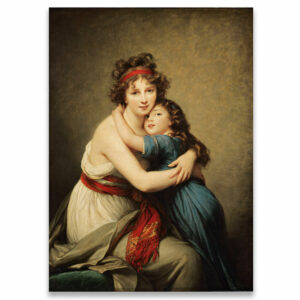
Art History with Tom Quinn
Six Wednesdays, November 5-December 10, 10 a.m.-12 p.m.
$168
Every enthusiastic 21st-century artist benefits from a knowledge of the art that came before. We look at slides of the greatest Western art, from prehistory to the mid-twentieth century, with lively discussions of the relevance of the art of the past to that of the present—and the future.
First Week: We begin by addressing certain questions, like: What is art history? Does it pass aimlessly, or will it converge on a goal? What is the purpose of studying art history? Why do we concentrate on Western art? Why are most of the artists men? In what ways do the motivations to create art change from one culture and period to
another — and in what ways do they remain constant? We see slides of the cave paintings of France and Spain. Early sculptures and reliefs, architecture and pottery from Sumeria, Assyria, and Persia. The great pyramids and the Sphinx. Ancient Egyptian painting and sculpture. Archaic vase painting and sculpture, Greek temple architecture, Classical and Hellenistic sculpture. Roman architecture, sculpture, and fresco painting. Byzantine
architecture, sculpture, and mosaics. Romanesque and Gothic churches, Gothic sculpture, and Medieval manuscript illuminations.
Second Week: The early Renaissance art of the Trecento, the great Renaissance painters and sculptors like Masaccio, Botticelli, Mantegna, and Piero della Francesca.
Third Week: The High Renaissance artists Leonardo da Vinci, Michelangelo, Titian, and Raphael. Mannerism from Bronzino, Pontormo, Parmigianino, etc. The great Renaissance artists of Northern Europe: Van Eyck, Bosch, Dürer, Cranach, Holbein, etc
Fourth Week: The great Spanish painters El Greco and Velázquez, the Roman artists Bernini, Caravaggio, and Poussin. Dutch painting from Rembrandt, Hals, and Vermeer. Eighteenth-century English painting from Hogarth, Gainsborough, Constable, and Turner. The neoclassicism of David and Ingres.
Fifth Week: First great American artists. Nineteenth-century French painting from Delacroix, Courbety, and Corot. The great impressionists Manet, Monet, Renoir, Degas, Cassatt, Whistler. Post-impressionism from Van Gogh, Gauguin, Cézanne.
Sixth Week: The 20th century: American regionalists, abstract expressionism, pop art, and contemporary art.

Meet Your Instructor
Tom Quinn
Originally from Great Falls, Montana, Tom Quinn grew up surrounded by art — mostly nostalgic celebrations of the Old West by the likes of Charles M. Russell and Fredrick Remington. He found there was more to art by the time he attended Gonzaga University and spent his junior year in Florence, the home of Michelangelo and Botticelli. There he became enamored of the serene beauty of Renaissance painting. After receiving a degree in art history, he went to the Art Institute of Seattle to pursue a career as an illustrator. At the time– the mid-eighties — there was a whole school of illustrators whose work was semi-primitive and had an ironic twist. The style died out by the nineties but Quinn considers it well worth reviving. Now living in Spokane, Quinn has done several murals in addition to his easel painting, his illustrated four books and several magazine articles, draws caricatures at parties and conventions, and teaches drawing and painting at the Spokane Art School, Corbin Art Center and the Institute for Extended Learning. His work has been exhibited in galleries in Spokane, Seattle, and Portland. He works mostly in acrylic and oil with hard edges, intense colors, and finicky detail. He likes to show what’s absurd but not impossible, to take the ordinary out of context, and to turn the familiar into the strange.
